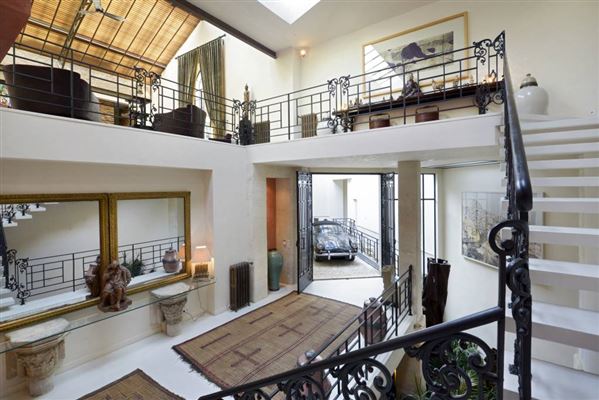

If you want to spice up the Spanish look of your home, add some color or modern design elements. As you’ll see in many of our examples, the paint color makes a big difference. It reflects the sunlight, making for a cooler home, and also highlights the distinctive texture in the brick or stonework that give these homes so much character. The off-white painted stucco is truly essential for any Spanish-style house.

The balcony now is a beautiful, cohesive feature, instead of an afterthought. Beautiful tile work takes things next level. Our designers updated the railing with matching woodgrain and landscaping for privacy. More typical in California, these extra outdoor spaces can be small or large, like with this home. Not all Spanish-style homes will feature a second-story balcony. You might also find turrets, bell towers, and arched doorways that mimic churches also built by the Spanish during that time period. Depending on the geography, different Spanish-style homes might have different features, like a second-story with a balcony. Finally, the exposed wood beams are often structural support for the low pitch or flat roof.Īny home with these features built after the 1800s is actually considered Spanish Revival. As such, the narrow courtyards also act as hallways or breezeways between rooms.
Home style galleried series#
Spanish-style houses typically do not have interior hallways, but instead a series of rooms built onto each other. Thick walls with white stucco over adobe brick or stone and small windows helped keep the houses cool in the hot weather. Naturally, some of these design details are practical. Also called the Spanish Colonial style, the characteristics of these homes include the following: Since the climate was similar, they built homes in the same architectural style with whatever materials were readily available.

The Spanish colonized what is now the southeast and southwest of the United States starting in the 1500s.


 0 kommentar(er)
0 kommentar(er)
